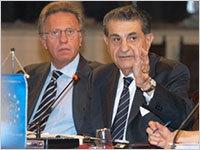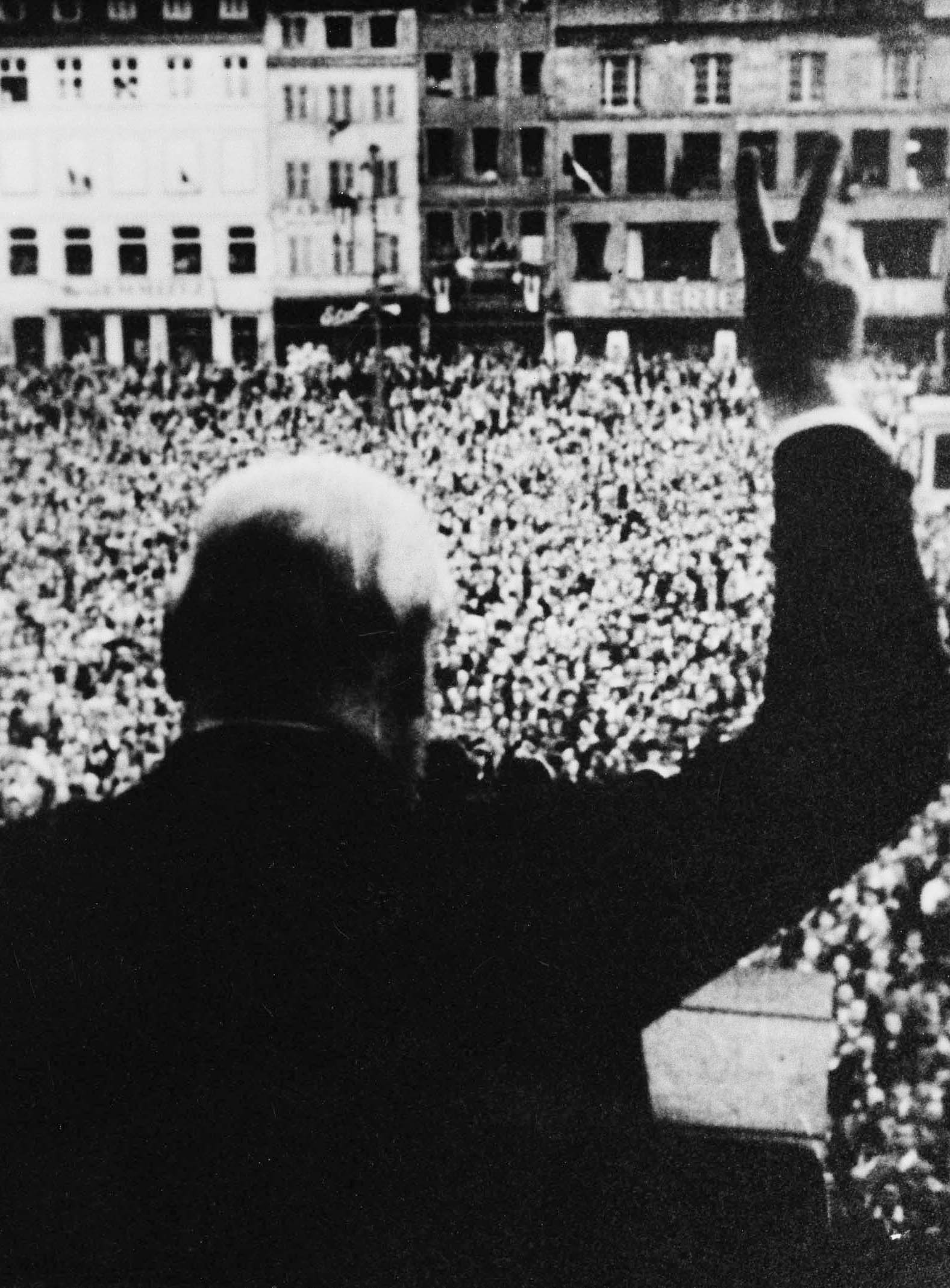Asset Publisher

A Venitian story
1990
Gianni BUQUICCHIO

My European adventure began in the autumn of 1970, with a traineeship – followed by a temporary contract – in the Legal Affairs Department of the Council of Europe, just as I was embarking on an academic career in international law at the University of Bari, the town where I was born. As a young Italian from the south, I followed keenly the initial stages of the construction of a united, open and cohesive Europe, founded on democracy and human rights, and every day I could see its exact opposite, since on the other side of the Adriatic lay what was then effectively a “black hole” on the geopolitical map of Europe, Enver Hoxha’s Albania. As well as my European commitment, and the desire to test my theoretical knowledge of international law against the reality of life in an international organisation, I had another, less honourable, motive, namely to delay, as far as possible, if not altogether avoid being enlisted in the Italian army – military service was, at the time, still compulsory in my country, and I had very little interest in military affairs or in wearing a uniform.
I worked, with my lawyer colleagues, in the former Human Rights Building, erected in 1965 to house the European Court and Commission of Human Rights. Its architects had designed a square building, whose shape (with four equal sides) and appearance (low-rise, solid construction) reflected its purpose. It had a lift between the two floors, in which I had my first significant encounter: with a charming young colleague, a Dutch lawyer by the name of Maud. I would, of course, rather have been in a lift with her in the Empire State Building, ascending all 381 metres and 102 floors of it, but even this short journey was sufficient to change the course of our lives, binding both our destinies in a way that would prove to be indissoluble. As regards ascending the Empire State Building, that would come a few years later, when we did it with our two children.
The most important event in the 1970s at the Council of Europe was the collapse of the fascist regimes in Greece, Spain and Portugal. Barely 19 months elapsed between the Carnation Revolution in April 1974 and the death of Franco in November 1975, enabling Europe to take the first steps towards reconciliation with itself. This wave of democratisation would sweep across the Atlantic, toppling, one after the other, the military regimes in former Spanish or Portuguese colonies: Ecuador in 1978, Peru in 1980, Bolivia in 1982, Argentina in 1983, Uruguay in 1984, Brazil in 1985 and Chile in 1989. History was in the making and, despite the spectacular changes taking place in the USSR with the rise to power of Mikhail Gorbachev in 1985, very few of us imagined that the wave would one day return to the continent of Europe with the force of a tsunami.
It was against this background that I had my second significant encounter, in the person of Antonio La Pergola. A distinguished lawyer specialising in constitutional law, and a European through and through, he was an extraordinary individual, a visionary brimming with ideas which were often incomprehensible to mere mortals and hence unworkable. One of those ideas, set against the dual backdrop of events in Latin America and the changes taking place in eastern Europe, was to create an international forum for constitutionalists for the development of democracy and the rule of law. As President of the Constitutional Court of Italy, he had developed close relations with his counterparts in western Europe and Latin America, and raised the question of the existence of constitutional principles common to all democracies, transcending political, social and cultural divisions. In 1988, as Italy’s Minister of European Affairs, he had shared his thoughts with Marcelino Oreja, the Secretary General of the Council of Europe, while the latter was on an official visit to his country. On his return from Italy, Oreja – who, in his youth, had been a student of Antonio La Pergola at Bologna University before going on to become Minister of Foreign Affairs in post-Franco Spain – asked me to go to Rome to see how this initiative could be implemented. This was my first encounter with Antonio.
We discussed his ideas at length, mindful of the need to be ready to help the countries of central and eastern Europe the moment – we did not realise how close that moment was – the Iron Curtain was lifted. As far as we were concerned, it was an obvious priority, but not everybody was mentally prepared for it. In May 1988, when Ambassador Antici, Permanent Representative of Italy to the Council of Europe, sounded out the Committee of Ministers about the idea of creating such a body within the Organisation, it got a very mixed reception. Interfering with constitutional law, which was so central to state sovereignty, was hardly “politically correct”, and only an Italian, who was as nice as he was eccentric, could contemplate such a move.
To overcome the impasse, we thought of holding a ministerial conference on “the development of democracy through law”, in a location that ministers might find appealing, even if the agenda was not to their liking. Florence was, for a long time, the favourite, but the Italian Minister of Foreign Affairs, Gianni de Michelis, originally from Venice, finally persuaded La Pergola to hold the conference in the city of the Doges, an excellent choice as it turned out.
The conference, which was held on 31 March and 1 April 1989 at the Cini Foundation on the island of San Giorgio in Venice, was attended by numerous foreign affairs and justice ministers from Council of Europe member states. In their Final Declaration, the ministers stated that the creation of a Commission for Democracy through Law at this moment in time “could bring about a notable contribution to the examination of the political development in European non-member states of the Council of Europe as well as in non-European States”.
It is clear from the (prudent) choice of phrase “non-member states of the Council of Europe”, that they were already thinking about the huge constitutional task that might unfold in central and eastern Europe. Furthermore, by going along with La Pergola’s ideas about expanding the Commission beyond Europe, clear reference was made to co-operation with non-European states. This also explains the decision at that stage to omit the word “European” from the Commission’s title.
The proposal to create what was known at the time as the “La Pergola Commission” was put on the agenda of the Committee of Ministers gathering in May 1989 to mark the Council of Europe’s 40th anniversary.
If you wish to continue your reading, you may buy the book "Europe: a human enterprise".
Gianni BUQUICCHIO
Born in 1944 in Bari (Italy), Gianni was awarded a PhD in law from the University of Bari and joined the Council of Europe in 1971. Among other things, he was in charge of the European Conferences of Ministers of Justice and the Legal Advice Department and Treaty Office, before helping to set up and develop the European Commission for Democracy through Law (“Venice Commission”) in 1990, and subsequently headed its secretariat. At the end of 2009, he retired from the Council of Europe Secretariat and was elected President of the Venice Commission. He has been re-elected several times, most recently in 2017.


